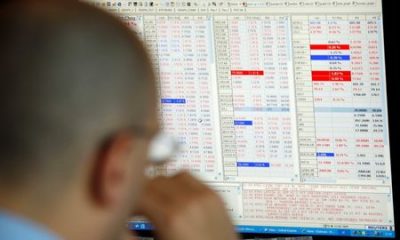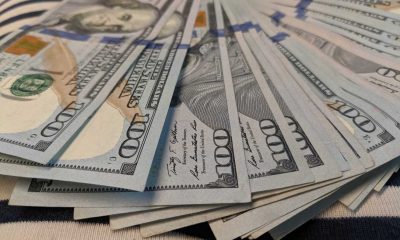Forex
How is the Australian dollar doing today?
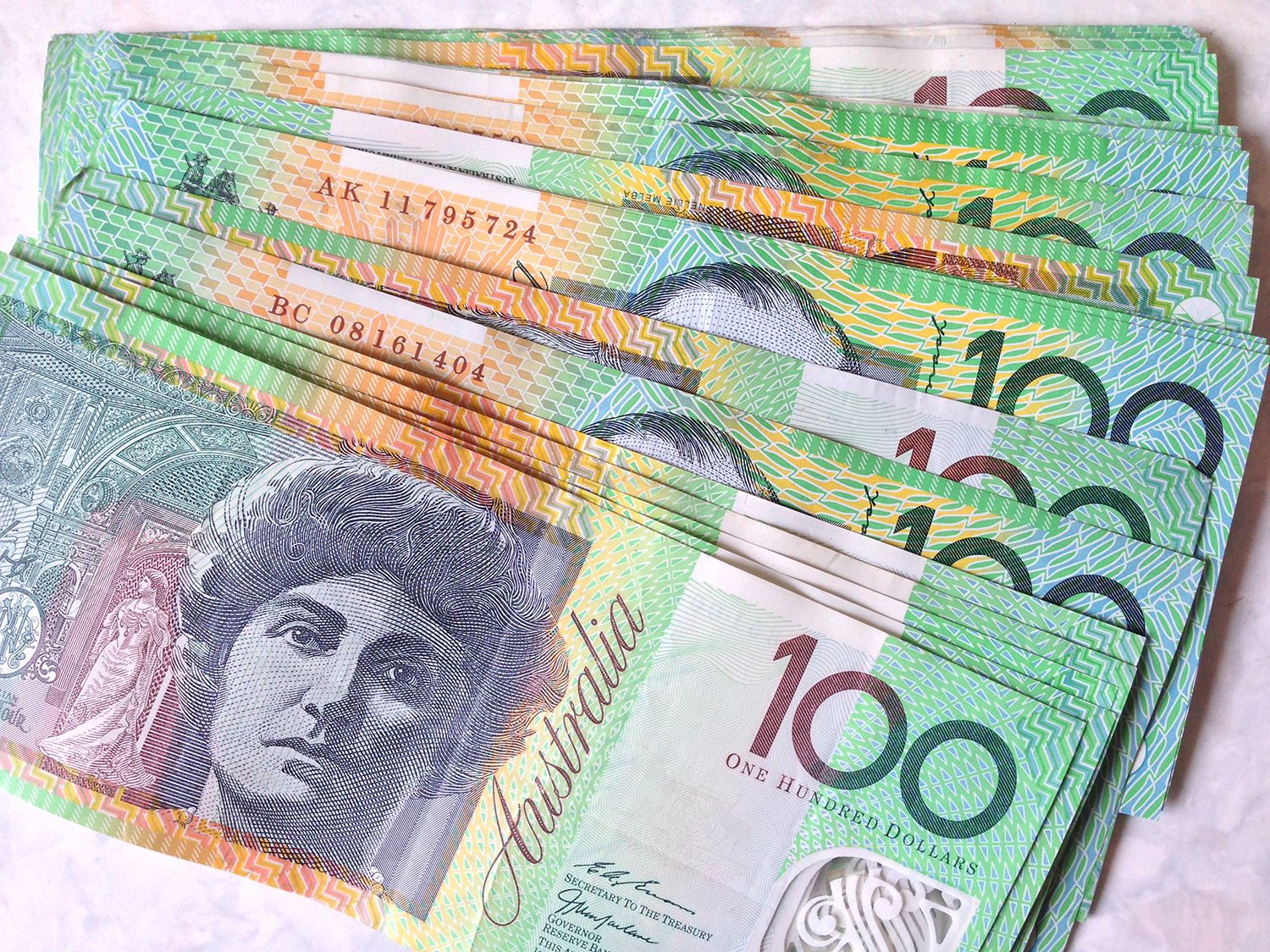
How is the Australian dollar doing today? The Australian dollar, thanks to its counterpart from the U.S., rose. However, the trend of weakening will continue, experts believe.
The Australian dollar and the yield on the issuing country’s government bonds fell after the consumer price index came in slightly below expectations. The rate of Australia’s national currency is under the strong influence of the U.S. dollar and the negative impact of a weakened coronavirus in China – the main economic neighbor of the island-mainland.
However, analysts at the Australia and New Zealand Banking Group (ANZ) said in their latest research report that Australia’s second-quarter inflation data does not change their view on the Reserve Bank of Australia (RBA) raising its rate by 50 bps in August.
Where is the Australian dollar going: some dollars are crying too
The Australian dollar has suffered markedly this year due to a slowdown in business activity. Businesses and companies have managed to save jobs, but otherwise the situation looks difficult. This is due to the spring Chinese lockdown – China, despite all the controversy, remains a key trade and economic partner of Australia – and the global recession.
Why is the australian dollar so bad? The Reserve Bank of Australia is following the global trend to raise rates, protects the financial system and generally looks progressive compared to global central banks. The risks include export declines, high energy prices, and U.S. dollar pressure.
Regarding technical analysis on the daily chart, the AUD/USD reached the corrective growth target of 0.7000 and can go down to 0.6900 to cool down. Mid-term the tool remains under pressure and can return to 0.6675, if the external background worsens and the pressure on the American currency increases.
The participants of the currency market call the Australian dollar a “kangaroo”. Only on July 27, the currency strongly “jumped” against the American dollar from 0.6900 to above 0.7000 – by almost 1.5%. It is still at that level in the morning of Thursday.
The main reason is the U.S. dollar. It dropped from 107.3 points to 106 points on the USDX index against the major currencies. This is a reaction to the outcome of the main event of the month for the markets – the US Federal Reserve meeting on Wednesday. The regulator predictably raised its interest rate from 1.75% to 2.5%. The increase to such a level was the most probable and was put in prices in advance.
Therefore, a coincidence with expectations led not to growth, but to a weakening of the dollar. The assumption of the relative caution of the Fed, which will not raise the rate to the discussed 2.75%, already from mid-July, weakened the dollar. The AUD/USD has been rising since July 14 from 0.6680.
Will its growth stop? During the day on Thursday the currency may be affected by important new statistics – the data on U.S. GDP for the second quarter. It is assumed that it has risen by 0.5% after a decrease of 1.6% in the previous period. Data better or worse than that forecast will weaken or strengthen the “kangaroo” along with other currencies, respectively. During the day the most probable range of AUD/USD movement is 0.6960 – 0.7020.
The Producer Price Index data may have a certain influence on the AUD on Friday. The indicator may be perceived positively for the quotation of this currency.
The U.S. dollar has higher chances of strengthening in the medium term until the end of the year. After all, the Fed has declared a further increase in interest rates and the sale of previously purchased bonds. The strengthening of AUD/USD in recent weeks is just a correction to the main downtrend, which was formed in February 2021. Its continuation may lead the pair to levels of 0.6500-0.6600 at the end of the year. Against this background, we can also analyze how the australian dollar is doing about inflation.
It is worth noting that due to the tense situation around the world, the entire world economy and stock markets are suffering. Let’s take the Facebook stock chart as an example. A combination of both external and internal factors put Meta in not the most enviable position. Once one of the most expensive companies in the world, it lost nearly $800 billion in market capitalization in less than a year. The social network Facebook has existed since 2004 and in the IV quarter of 2021, the social network for the first time in history was faced with a decrease in the daily active audience – it became less than about 500 million people. In September 2022, Meta announced its first-ever downsizing.
Forex
Dollar-positive risks from US election outcome “moderate”, UBS says
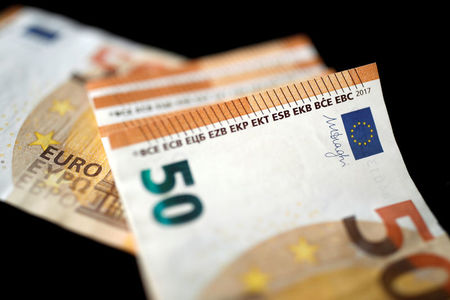
Investing.com — The US dollar is generally trading above its implied fair value, potentially hinting at support from a recent uptick in the chances that Donald Trump will win November’s US presidential election, according to analysts at UBS.
However, they noted that the greenback remains within its standard deviation bands, which help account for volatility in movements in the currency. This suggests that “any dollar-positive election risk premium is still moderate,” the analysts said.
Over the past month, a gauge comparing the dollar to a basket of its currency pairs has climbed by more than 3%.
The move comes as prediction markets like Kalshi and PredictIt show Trump is the clear favorite to emerge victorious following the Nov. 5 ballot.
However, these bets have received some scrutiny because they have diverged from national polling averages, which indicate that Trump’s Democratic rival Kamala Harris holds a narrow advantage with only two weeks of campaigning left. Crucially, both candidates are all but tied in several key battleground states that are tipped to have a heavy impact on the outcome of the election.
A victory for Trump, who has called for tax cuts, looser financial rules and sweeping tariffs, could provide some support to the dollar, analysts have said. For example, his proposal to impose a blanket levy on imports into the US could dent Asian and European exporters, possibly leading local central banks to slash interest rates. This would, in turn, potentially weaken their currencies and bolster the dollar.
Speaking to Bloomberg News last week, Trump dismissed concerns these trade policies would hit the US economy, arguing that they would instead help “bring companies back to our country”.
Outside of the election, analysts cited by Reuters have said the dollar has been boosted by expectations that overseas central banks will likely have to cut interest rates deeply because their economies are not growing as fast as the US. Meanwhile, uncertainty still surrounds the pace of the Federal Reserve’s much-anticipated policy easing cycle following a jumbo 50-basis point rate reduction by the central bank in September.
(Reuters contributed reporting.)
Forex
Goldman Sachs says euro could drop 10% under Trump tariffs and tax cuts
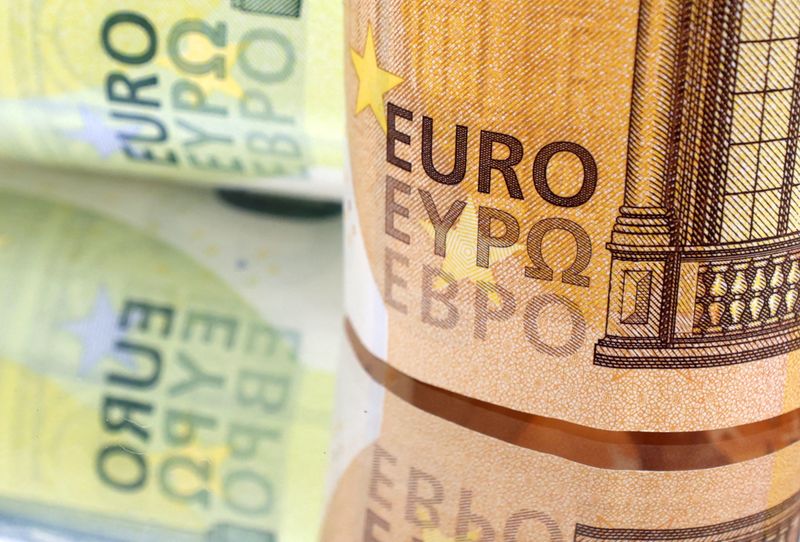
By Harry Robertson
LONDON (Reuters) – Goldman Sachs said on Tuesday the euro could fall as much as 10% – implying a drop below $1 from current levels – in a scenario in which Donald Trump imposes widespread tariffs and cuts domestic taxes if he wins the Nov. 5 U.S. presidential election.
Republican former President Trump is currently neck and neck with Democratic Vice President Kamala Harris, but Trump’s radical economic policies would likely have the bigger impact on Europe, a key trading partner of both the United States and China.
Goldman said a scenario in which Republicans win the presidency and Congress could lead to higher tariffs and domestic tax cuts that would act as stimulus for the economy.
A 10% U.S. tariff on all imports and a 20% levy on Chinese products, combined with tax cuts, could cause the dollar to rally sharply and the euro to drop 8% to 10%, Goldman Sachs analyst Michael Cahill said in a note on Tuesday. The euro last traded at $1.083. It last traded below parity in November 2022.
Both measures would likely push up inflation, implying significantly higher interest rates in the U.S. than Europe that would boost the dollar’s appeal.
“We expect the strongest dollar response to come from a Republican sweep, which would open the door to larger tariff increases in combination with domestic tax cuts,” Cahill wrote
A narrower trade war, in which Trump only imposes further tariffs on China, could see the euro fall by around 3%, Cahill said.
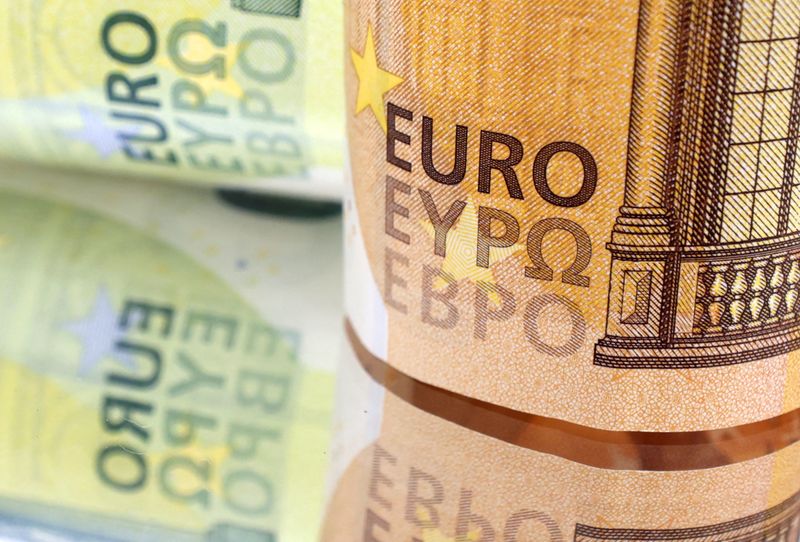
“A Democratic sweep or divided Democratic government would likely result in some initial dollar downside, as markets reprice the prospect of more dramatic changes in tariffs.”
The euro has dropped 2.7% so far in October, as the U.S. economy has pulled away from Europe, and as some investors have positioned for higher tariffs after a potential Trump victory.
Forex
Dollar just off August high, US rates and election in focus
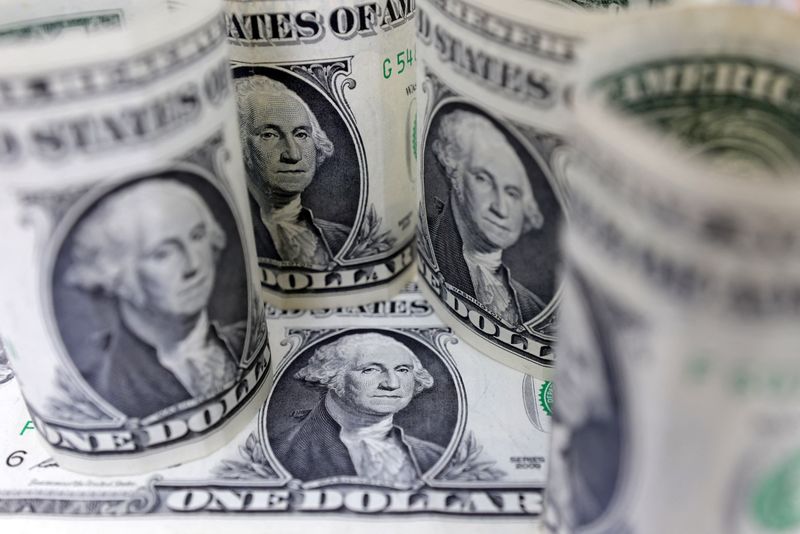
By Stefano Rebaudo
(Reuters) -The U.S. dollar was just off a 2-1/2 month high on Tuesday on expectations the Federal Reserve will take a measured approach in easing its policy, while a too-close-to-call U.S. election campaign kept investors on edge.
The dollar’s strength, boosted by rising Treasury yields, kept pressure on the yen, euro and sterling, a theme that has been building over the past few weeks as traders scale back their bets on rapid U.S. rate cuts.
Benchmark 10-year Treasury yields rose 3 bps in London trade to a fresh 12-week high as investors priced for a more robust American economy.
Some analysts argued that the release of the Beige Book late on Wednesday could be the biggest threat to the greenback this week, with the previous summary of economic conditions regarded by some as the main trigger for the 50-basis-point-(bp)-rate cut in September that kicked off the Fed’s easing cycle.
Markets are pricing in an 87% chance of the Fed cutting rates by 25 bps next month, versus a 50% chance a month earlier, when investors saw an equal likelihood of a larger 50-bp cut, the CME FedWatch tool showed.
Traders are anticipating another 40 bps of easing overall for the rest of the year.
“The U.S. dollar rose recently on the hawkish repricing of expectations for the Fed monetary policy and because uncertainty regarding U.S. elections reduced risk appetite supporting safe-havens,” said Nick Andrews, strategist at HSBC.
However, U.S. elections are still the main focus.
Markets expect the strongest dollar response from a Republican sweep, which should open the door to larger increases in trade tariffs in combination with fiscal stimulus.
A smaller rally for the greenback is seen in response to a divided Republican government outcome, while a Democratic sweep or a divided Democratic government would likely result in some initial downside.
The , which measures the U.S. currency versus six others, was last at 103.91, having touched 104.02 on Monday, its highest since Aug. 1. The index is up more than 3% so far this month.
The euro last bought $1.0827, near its lowest since Aug. 2, while sterling was at $1.3006, near its lowest since Aug. 20.
Euro zone PMI data on Thursday could provide an additional downward push to the single currency if it underlines the poor economic situation in the euro area and boosts bets on future European Central Bank rate cuts.
ECB speakers will also be in focus after President Christine Lagarde delivered a dovish message last week.
“The key question is: are the hawks fine with Lagarde’s sanguine disinflation view, a gradual shift in focus to growth and such a dovish market pricing?” said Francesco Pesole, forex strategist at ING.
“Given some lingering pockets of sticky services inflation in the euro zone, the answer is probably no.”
ELECTION IN FOCUS
With the U.S. election just two weeks away, the rising odds of former President Donald Trump winning are boosting the dollar, since his proposed tariff and tax policies are seen as likely to keep U.S. interest rates high.
“Even small changes in tight polls could drive seemingly erratic swings in market sentiment,” said Antti Ilvonen, forex analyst at Danske Bank.
The yield on the benchmark U.S. 10-year Treasury note rose to its highest since July 26 at 4.22%.
That weighed on the yen, which was roughly unchanged at 150.88, after touching a near three-month low of 151.10 per dollar.
The Bank of Japan is carefully looking at the upside risks from rising import prices as the yen weakens, Executive Director Takeshi Kato was quoted as saying by Jiji Press on Tuesday.
The yen weakness comes with Japan set to conduct a general election on Oct. 27. While opinion polls vary on how many seats the ruling Liberal Democratic Party will win, markets have been optimistic that the LDP, along with junior coalition partner Komeito, will prevail.
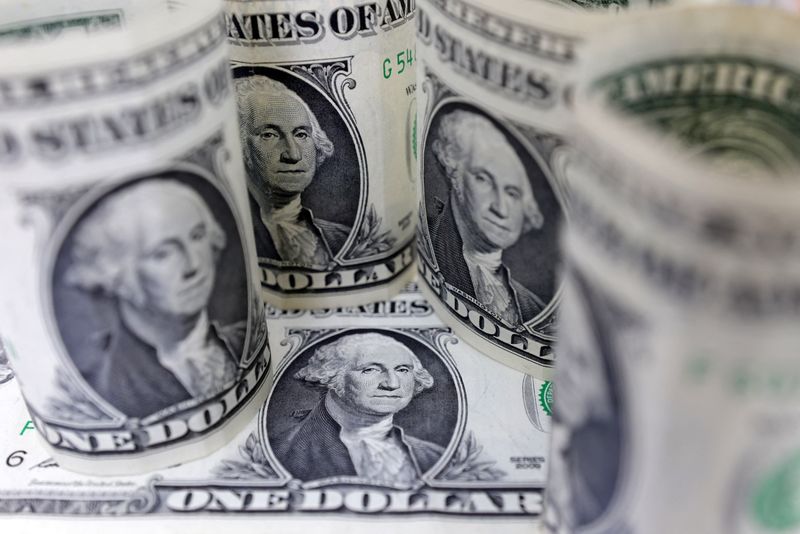
Barclays expects a suppression of pricing of BoJ rate hikes and an increase in fiscal concerns, driving the yen higher if the LDP/Komeito coalition has to form a government with additional coalition partners.
It also forecasts that in the unlikely event (tail risk scenario) of the LDP and its coalition partner Komeito being unable to form a government, risk-off moves could drive a sudden 2% drop in the dollar/yen exchange rate.

 Forex2 years ago
Forex2 years agoForex Today: the dollar is gaining strength amid gloomy sentiment at the start of the Fed’s week

 Forex2 years ago
Forex2 years agoHow is the Australian dollar doing today?

 Forex2 years ago
Forex2 years agoDollar to pound sterling exchange rate today: Pound plummeted to its lowest since 1985

 Forex2 years ago
Forex2 years agoUnbiased review of Pocket Option broker

 Cryptocurrency2 years ago
Cryptocurrency2 years agoWhat happened in the crypto market – current events today

 World2 years ago
World2 years agoWhy are modern video games an art form?

 Commodities2 years ago
Commodities2 years agoCopper continues to fall in price on expectations of lower demand in China

 Forex2 years ago
Forex2 years agoThe dollar is down again against major world currencies







